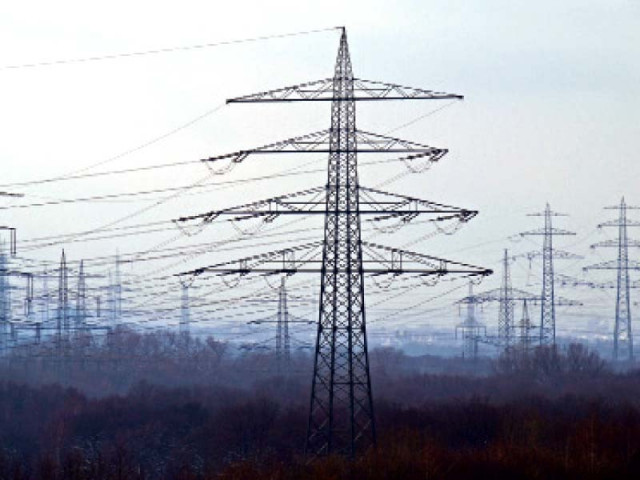Rs330b subsidy proposed for power
Tarin supports proposal to give subsidised energy to five export sectors

The Ministry of Finance may allocate Rs330 billion for power subsidies, which are equal to 60% of the next fiscal year’s estimated needs, sowing the seed for additional Rs220 billion circular debt from the very first day of the new fiscal year.
Finance Minister Shaukat Tarin also threw his weight behind a proposal of giving subsidised gas and electricity to five export-oriented sectors under existing mechanisms that will result in undue subsidy payments of about Rs14 billion to Rs17 billion on nearly 35% of the production by 4,000 industrial units that is sold in the local markets.
“The Ministry of Finance has proposed Rs330 billion power subsidies as against the requirements of Rs500 billion, excluding the need for subsidies for the five export-oriented sectors,” Special Assistant to Prime Minister on Energy Tabish Gohar told The Express Tribune.
“On July 1, we will enter the new fiscal year with Rs220 billion addition in the circular debt, if the Ministry of Finance does not provide full subsidies cover for the domestic as well as the export-oriented sectors,” said Gohar.
The unpaid subsidies have contributed to circular debt that has jumped to over Rs2.6 trillion, posing serious risks to the power sector stability.
However, the Special Assistant to Prime Minister on Finance Dr Waqar Masood Khan claimed on Thursday before National Assembly Standing Committee on Finance that the Finance Division has allocated the subsidies “almost equal to what had been demanded by the Power Division”.
Read: New power tariff slabs on the cards
The International Monetary Fund (IMF) has been urging Pakistan to give subsidies only to the extent it can afford to pick in the budget.
Finance Minister Tarin on Thursday chaired a meeting to decide whether to continue subsidy payments to the five export-oriented sectors under the existing mechanism or link it with the actual export receipts.
The finance minister has decided that for at least one year, the existing mechanism would continue, said Gohar.
The five export-oriented sectors would get electricity at nine cents per unit and gas at $6.5 per mmbtu. These sectors are textile, surgical goods, carpets, leather, and sports goods.
“Our estimates suggest that the five export-oriented sectors sell up to 35% of their production in the domestic market but get subsidised gas and electricity on 100% inputs,” said Gohar. He said that the energy ministry had proposed that subsidies to the exporters should be linked with the actual exports receipts but the finance ministry did not agree.
The input-based subsidy to five export-oriented sectors would add Rs50 billion into circular debt, if the Ministry of Finance did not approve the budget, said Gohar.
At 35% domestic sale assumption, these five sectors would get Rs14 billion to Rs17 billion undue subsidies. There are about 4,000 zero rate industrial units that are availing these subsidies.
The SAPM said that the energy ministry also proposed that the subsidy amount should be given to commerce ministry as one line item but this proposal has not been accepted either.
Tarin was of the view that this may create refunds problems for the exporters and would add more layers of bureaucracy.
Read more: Government prioritises power projects
The Power Division is responsible for reducing the circular debt but how we would cut it down when the adequate subsidies are not allocated in the budget, said Gohar.
“Business as usual would continue for at least one more year as far as subsidies to five export-oriented sectors are concerned,” he added.
The PM aide lamented that no one was interested in structural reforms that would have addressed the issue permanently.
However, the government has kept its decision of shifting the industrial sector back to national electricity grid, except those industries that need gas for co-generation. The deadline for the industries is December this year.
A finance ministry handout stated that Tarin “after discussion with the relevant stakeholders, decided that for the next budget subsidies will be allocated on the basis of actual consumption/accrual and a more targeted approach for disbursement will be adopted”.
It was also decided in principle that the growth of export-oriented sector will be the main objective of the government while offering any change/consistency in the rates, so that the industry should use its full potential and play its rightful role in the development of the country, said the finance ministry.
The finance ministry said that there was a general consensus that there was a need to generate a database which could establish the nexus between tariffs and progress of the export-oriented sectors/industry.
Published in The Express Tribune, May 28th, 2021.
Like Business on Facebook, follow @TribuneBiz on Twitter to stay informed and join in the conversation.



















COMMENTS
Comments are moderated and generally will be posted if they are on-topic and not abusive.
For more information, please see our Comments FAQ